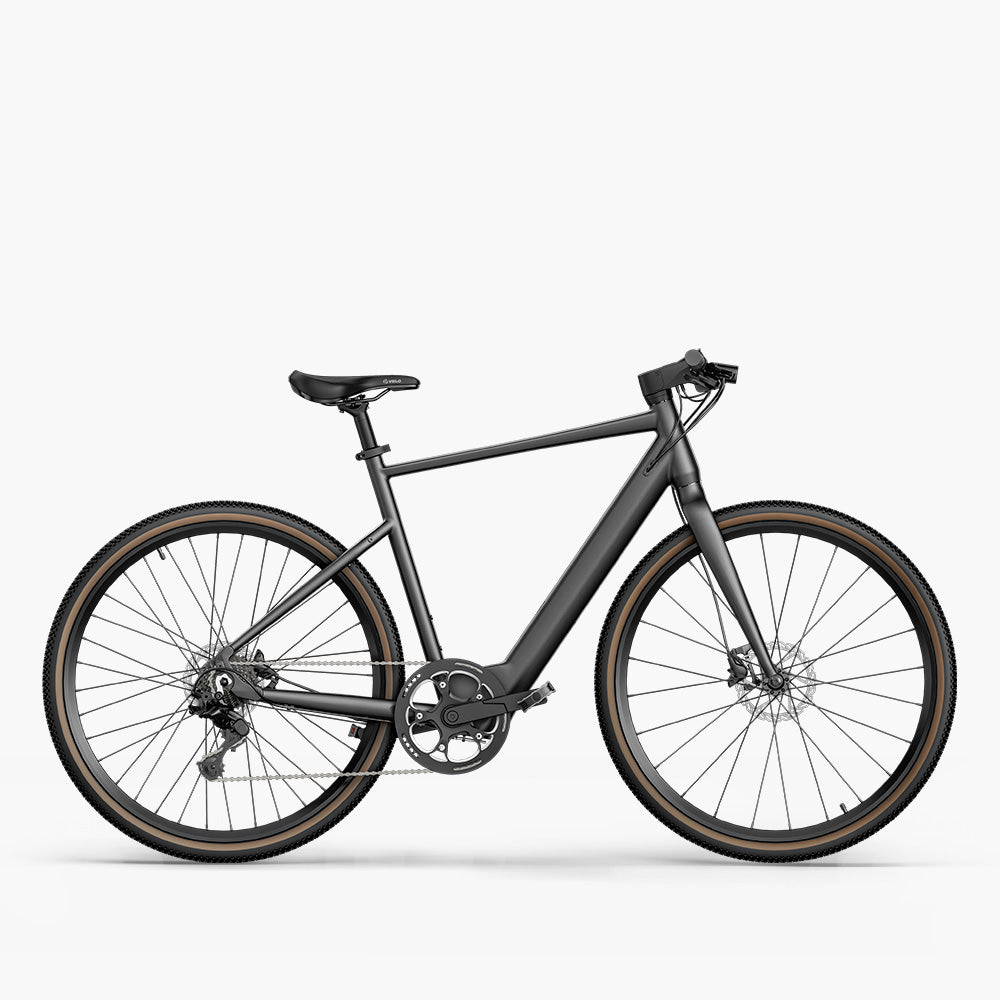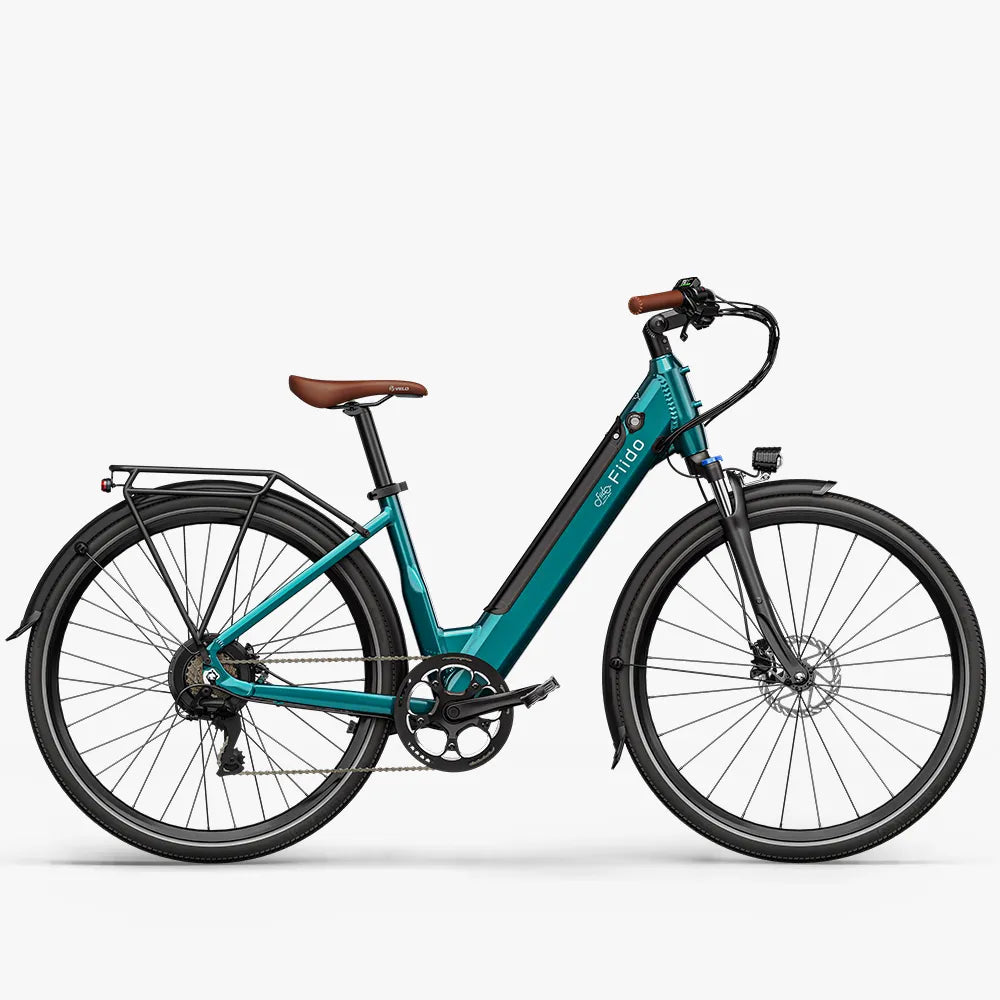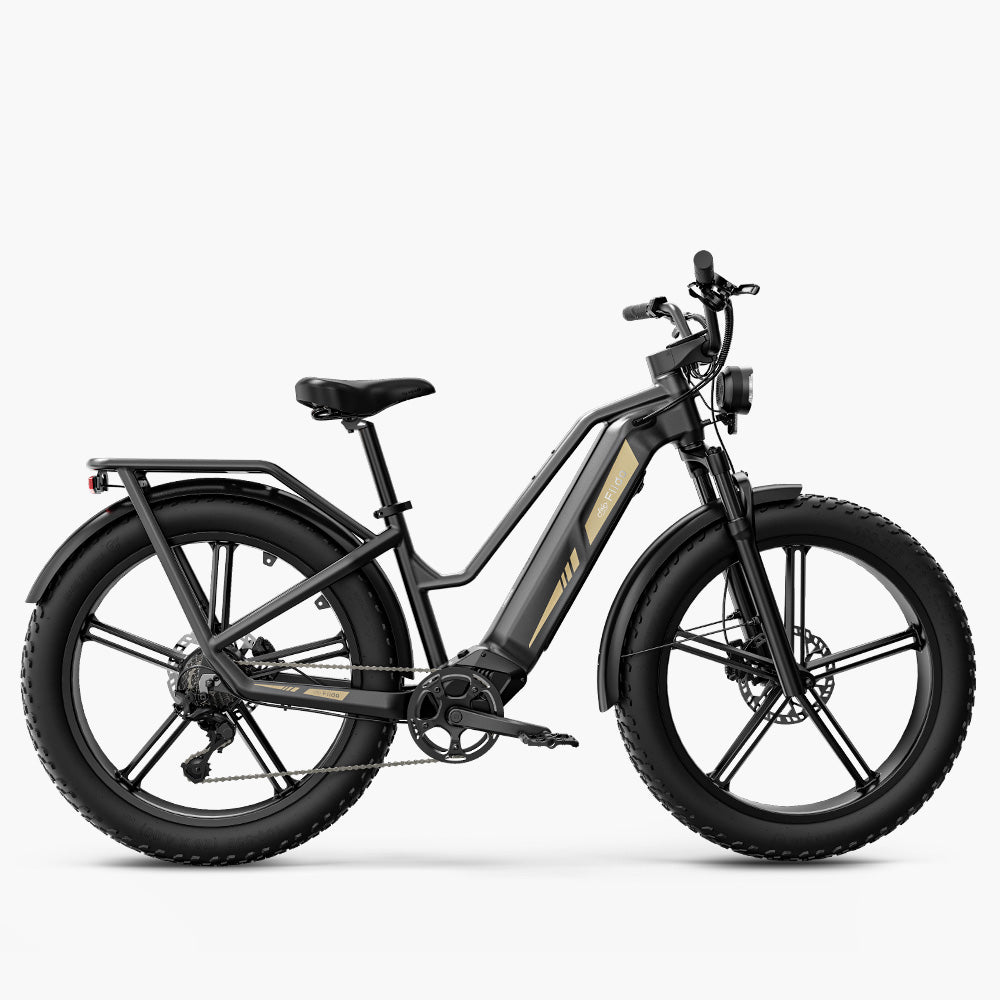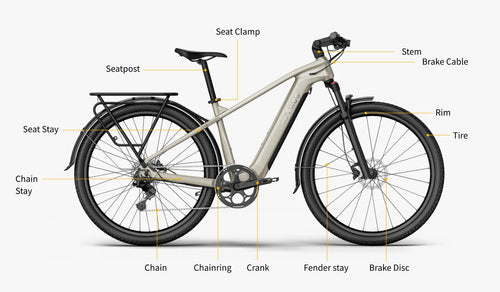The growing popularity of e-bikes has also sparked interest in their power consumption and the required battery capacities. Below, we will examine the different aspects of power demand for e bikes to answer the key question: How much power does an e-bike actually need?

What Type of Battery Does Your E-Bike Need?
1. Battery Types
E-bikes mainly use two types of batteries: lithium-ion batteries and lead-acid batteries. Both have their advantages and disadvantages.
Lithium-ion batteries:
These batteries are lightweight, have a high energy density, and offer a long lifespan. They can store more energy in a smaller format, making them ideal for e-bikes. Another benefit is their low self-discharge rate, meaning they can remain inactive for longer without losing capacity.
Lead-acid batteries:
These batteries are generally cheaper, heavier, and less efficient. They have a shorter lifespan and require more space. Their use in e-bikes is declining, as lithium-ion batteries dominate most modern e-bikes due to their superior performance.
2. Understanding E-Bike Power, Range, And Energy.
Battery capacity is often measured in ampere-hours (Ah) or watt-hours (Wh).
Understanding battery capacity:
A higher value means the battery can store more energy, which results in a greater range. For example, a battery with 500 Wh can provide more energy than one with 300 Wh.
The e-bike energy use:
The range of an e-bike depends on the battery capacity. An fiido battery with 500 Wh can travel up to 100 km under ideal conditions, while a model with only 300 Wh may only reach about 50 km. Factors such as terrain, rider weight, and riding style also influence the actual range.

Factors Influencing Power Consumption
1. Riding Conditions
Road Conditions:
On flat roads, an e-bike requires less energy than on inclines. Riding uphill significantly increases power consumption, while downhill riding can reduce battery usage, as the motor often needs little or no power.
Weather:
Wind speed and temperature play a crucial role. Headwinds increase energy consumption because the e-bike must work harder to maintain speed. Cold temperatures can also reduce battery performance, as chemical reactions within the battery slow down.
2. Riding Habits
Frequency of Acceleration and Braking:
Frequent acceleration and sudden braking lead to higher energy consumption. A consistent riding style with anticipatory driving can help reduce power usage.
Number of Riders and Load Capacity:
The more weight an e-bike has to carry, the more energy it needs. This applies not only to additional passengers but also to luggage. Excess weight can significantly impact the e-bike's range and efficiency.

3. Types of E-Bikes
City Riding vs. Commuting:
E-bikes designed for city use are often lighter and more compact, while commuter e-bikes usually feature more powerful motors to handle longer distances efficiently.
Power Requirements for Each Type of E-Bike:
E-bikes for sports or off-road riding require more power to withstand more demanding conditions. These models are often equipped with higher-capacity batteries and stronger motors to meet those extra demands.
Performance Advantages of Fiido E-Bikes
Fiido e-bikes are not only powerful but also energy-efficient and safe.
Fiido’s Battery Management System:
Fiido uses lithium batteries for faster charging and greater energy storage. The fiido battery has passed tests for internal resistance, charge/discharge, overcharge protection, over-discharge protection, overcurrent protection, temperature protection, capacity, drop resistance, and short circuit. These ensure effective prevention of safety issues such as overcharging, over-discharging, short-circuiting, and overheating. Combined with an IP54 waterproof rating, the system withstands harsh weather conditions and provides a safe riding experience for users.
This system ensures the battery is used optimally by monitoring and managing energy distribution while riding. It prevents the battery from being over-drained or overloaded, thereby extending its lifespan.
Introduction of Energy-Saving Riding Mode:
Many models offer an energy-saving riding mode that adjusts the motor to provide full power only when truly needed. This can significantly extend the range and is especially useful for long-distance trips.
How to Choose the Right E-Bike?
Consider Your Usage Scenarios
Choosing the right e-bike greatly depends on your personal usage scenarios.
Daily Commuting:
If you mainly use your e-bike for commuting to work, the Fiido C21 city e-bike is an excellent option. This model is a lightweight electric bike, city-style e-bike designed for urban commuters. It features a 208.8 Wh battery and offers a range of up to 80 km. With its streamlined frame and comfortable riding geometry, it is ideal for navigating city streets efficiently.
Fiido E-Gravel C21 Electric Bike
Urban commuter electric bike with torque sensor, only 38.58 lbs.
Reminder: Prices are subject to the product detail page ,some earlier card details may have been updated.
All-Purpose Urban Mobility:
The Fiido C11 Pro lightweight E-bike is perfect for those seeking a more versatile city ride. As a lightweight electric bike with removable battery, it offers both convenience and comfort for everyday errands or longer city trips. With a 499.2 Wh battery capacity, the C11 Pro provides up to 100 km of range. The removable battery design makes it easier to charge anywhere and simplifies Fiido battery replacement, making it ideal for users who prioritize practicality and maintenance ease.
Fiido C11 Pro City E-bike
Trusted by 10000+ riders, Fiido C11 is now even better.
Reminder: Prices are subject to the product detail page ,some earlier card details may have been updated.
Leisure Rides:
The Fiido M1 Pro fat tire ebike is a foldable, all-terrain e-bike that’s perfect for relaxed weekend outings and mixed-surface riding. It comes with a 696 Wh battery and a range of around 130 km, with a top speed of 40 km/h. Its compact foldable design makes it easy to store or transport in the trunk of a car, while still offering strong performance and comfort for casual rides.
Fiido M1 Pro Fat Tire Electric Bike
The most cost-effective fat tire ebike for off-road adventures.
Reminder: Prices are subject to the product detail page ,some earlier card details may have been updated.
Long-Distance or Off-Road Adventures:
For long-distance trips or off-road exploration, the Fiido Titan long range electric bike is an ideal choice. It features a powerful 960 Wh removable battery and offers a range of up to 135 km. Designed with rugged fat tires, a strong frame, and a carrying capacity of up to 200 kg, the Titan is perfect for tackling tough terrains, outdoor adventures, family rides, or even cargo delivery needs.
Fiido Titan Robust Cargo Electric Bike
A powerhouse with a 248-mile range and 4-piston brakes, ideal for hunting and fishing trips.
Reminder: Prices are subject to the product detail page ,some earlier card details may have been updated.
Conclusion
Choosing the right e-bike is essential to fully unlock the potential of electric mobility. Power consumption depends on several factors, including battery type, riding conditions, and personal riding habits.
Fiido offers a wide range of models that stand out for their efficient energy management and high-performance technology. Each model is designed to meet specific needs and ensure optimal use of electric power. Whether for daily commuting, leisure rides, or long-distance tours – the right Fiido e-bike provides an excellent solution for eco-friendly and flexible mobility.
Looking to try one out? Explore e bikes near me and book a Fiido test ride today.
FAQ – Frequently Asked Questions
❓ How much power does an e-bike consume per kilometer?
🔎 On average, an e-bike consumes between 5 to 15 watt-hours (Wh) per kilometer, depending on rider weight, terrain, and speed.
❓ What type of battery is best for an e-bike?
🔎 Lithium-ion batteries are the most efficient and widely used in modern e-bikes due to their lightweight design, high energy density, and long lifespan.
❓ How can I increase the range of my e-bike?
🔎 You can extend your e-bike’s range by riding in energy-saving mode, reducing unnecessary acceleration, maintaining steady speed, and ensuring proper tire pressure.
❓ What should I do if my e-bike battery won’t charge?
🔎 If your e-bike battery is not charging, check the charger, connectors, and ensure the battery management system isn’t locked. Fiido e-bikes feature safety-tested, replaceable batteries for easy maintenance.
❓ Which Fiido e-bike is best for long-distance travel?
🔎 The Fiido Titan is ideal for long-distance or off-road trips with its 960 Wh removable battery and range of up to 135 km.
❓ Can I replace my Fiido e-bike battery? (includes keyword: Fiido battery replacement)
🔎 Yes, most Fiido models use removable batteries, making Fiido battery replacement simple and user-friendly.

















